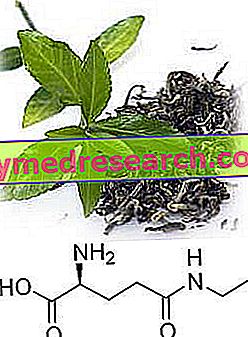Priapism is a pathological erection of the penis, not spontaneously reducible, often painful, prolonged beyond 4-6 hours, persistent even after any orgasm and in any case not necessarily related to sexual stimuli.
If it is not treated in useful times, priapism - besides being rather annoying and embarrassing - causes permanent damage to the tissues of the penis, hesitating in erectile dysfunction (impotence).

The term priapism derives from Priapus, the Greek god of fertility, son of Aphrodite, endowed with a monstrously pronounced member in length and rigidity.
Symptoms and classification
The various forms of priapism are divided into two broad categories: ischemic or low-flow (venous priapism) and non-ischemic or high-flow (arterial priapism). The former, much more frequent, are characterized by the particular rigidity of the shaft of the penis (the glans, on the contrary, is typically soft), which is painful. In arterial priapism, however, the penis appears warm, erect but not too rigid, therefore compressible and generally painless.
Patients with ischemic priapism can also develop intermittent forms, experimenting over time with repeated erective episodes interspersed with detumescence ones. This type of priapism mainly affects patients with hematological diseases.
Causes and consequences of priapism
Priapism is a fairly rare condition that, rather than real causal factors, recognizes numerous possible predisposing elements. In most cases it is observed between 5 and 10 years and between the second and fifth decade of life; in childhood, the main cause is sickle cell anemia, while in adulthood priapism is more often related to pharmacological causes. Moreover, in most cases the phenomenon occurs in the low-flow form; as anticipated, in such circumstances we speak of venous priapism. In these cases, in fact, prolonged erection is due to the lack of venous blood outflow from the penis, with consequent blood stagnation inside the cavernous bodies. After a few hours, in the absence of a blood change, the smooth muscle cells begin to suffer from a lack of oxygen; the state of local acidosis, with increased haematic viscosity, and edema of the trabeculae, favors the maintenance of the state of priapism, hindering blood drainage. When anoxia becomes particularly prolonged, oxygen deficiency causes muscle cell necrosis and fibrosis, resulting in permanent erectile deficit. For this reason, low-flow priapism - unlike the arterial one - constitutes a urological emergency, with a risk of complications that grows progressively over time.
Venous priapism can be caused by numerous systemic blood diseases, such as leukemia, drepanocytic (or sickle cell) anemia, thalassemias, polycythemias, coagulopathies, hemophilia, dyserthropoiesis and thromboacitoastenia. Other times neuromuscular factors come into play with alteration of the regulatory mechanisms of erection, systemic diseases (such as diabetes), but also neoplastic, infectious, allergic, toxicological (bite-black poisoning or scorpion bite) and pharmacological causes. Regarding the latter, one of the most common causes of priapism in adults is linked to the intracavernous injection of drugs that induce an erection, such as papaverine, phentolamine or PGE1 (alprostadil). Rare episodes of priapism related to the abuse of new-generation drugs, such as sildenafil, tadalafil and vardenafil, appear instead. Among the other medicines that can promote the onset of priapism we mention the fluoxetine and bupropion antidepressants; drugs used against psychotic disorders, such as risperidone and olanzapine; active ingredients against anxiety, such as diazepam; anticoagulants such as warfarin (Coumadin) and heparin. Finally, we must not forget that priapism can also be triggered by alcoholism and drug abuse such as cocaine, marijuana and ecstasis.
High-flow priapism is less common than ischemic priapism and is linked to an increase in arterial flow in the corpora cavernosa, not sufficiently disposed of by the normal venous outflow pathways. In most cases it is caused by a genito-perineal trauma, which can damage a branch of the cavernous artery by creating an arteriovenous fistula (direct pathological communication between veins and arteries). Due to the rich oxygenation of the arterial blood, in these cases there is no repercussion on the erectile capacity of the penis.
What to do in the presence of priapism
In the presence of low-flow priapism, rapid therapeutic intervention must be instituted to control pain and prevent erectile dysfunction secondary to cavernous fibrosis. A very important step is given by the diagnosis and the correct identification of the causes of origin, to then prevent the appearance of recurrences. In the case of low-flow priapism, however, it is good to first focus on correcting venous drainage.
Less aggressive therapeutic strategies solve most cases of priapism; it is therefore recommended to start with these. The emergency treatment of venous priapism, therefore, involves first of all the aspiration of blood from the corpora cavernosa with or without non-heparinized physiological irrigation. In case of failure of the previous intervention, we proceed to intracavernous sympathomimetic injection, performed by injecting vasoconstrictor substances into the corpus cavernosum of the penis, such as phenylephrine, norepinephrine, ethylphrine, epinephrine and metaraminol. In this regard, attention must be paid to the systemic effects linked to the possible entry of these substances into the circulation. Even the ice, applied on a cloth to avoid burns, performs a vasoconstrictor action increasing the sympathetic tone, thus stimulating the contraction of the smooth vascular muscle cells; however, as illustrated in the article, before an episode of priapism it is good to go immediately to the emergency room to prevent permanent injuries.
The gradual transition from NSAIDs to opiates is indicated for the treatment of pain.
Before opting for a surgical solution, it is a good idea to repeat the intracavernous procedure of sympathomimetics several times. In patients in whom the priapical picture does not resolve with medical therapy, an artificial veno-cavernous or cavernous-cancellous shunt can be performed to determine venous detumescence in order to bypass venous occlusion, draining blood into another vein via an artificial fistula.
In cases of low-flow priapism, selective embolization of the arteries responsible for via fistula (occluded by using substances of various kinds) has now become the treatment of first choice. The procedures described for the treatment of venous priapism are not indicated, however, either because they have no efficacy, or because the high venous drainage would lead to the systemic spread of locally injected drugs, with possible relevant side effects. Furthermore, arterial priapism is not a medical emergency and it is therefore good to wait for the results of diagnostic tests.



